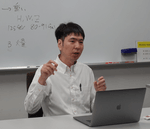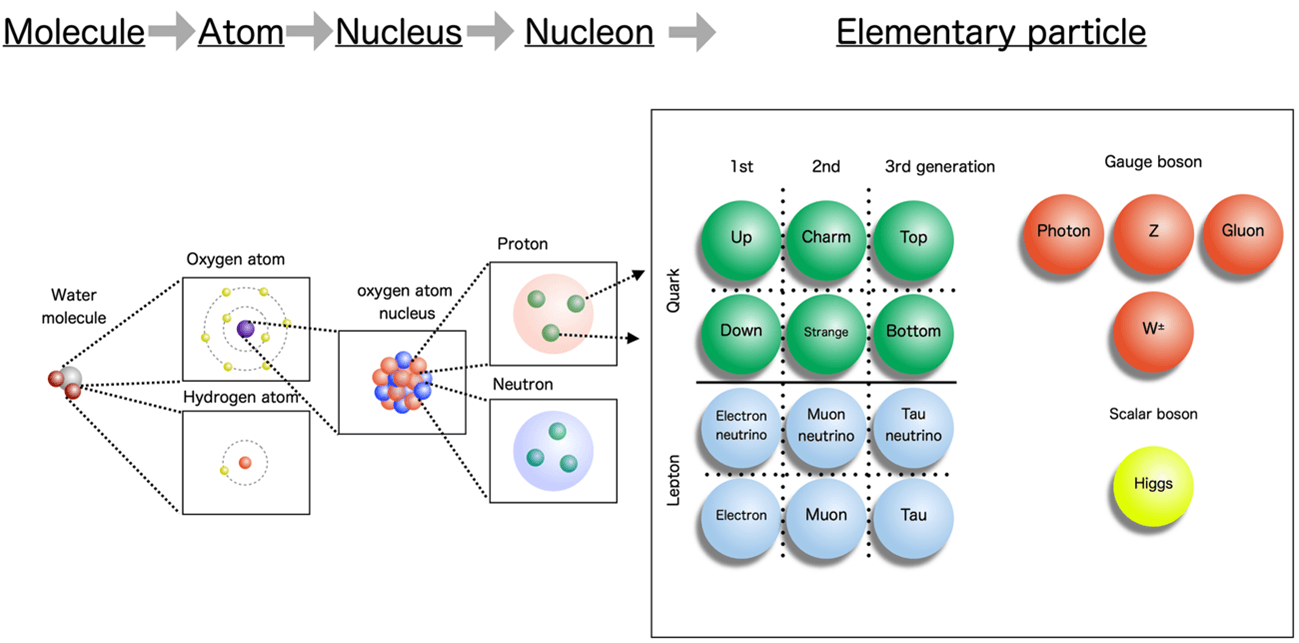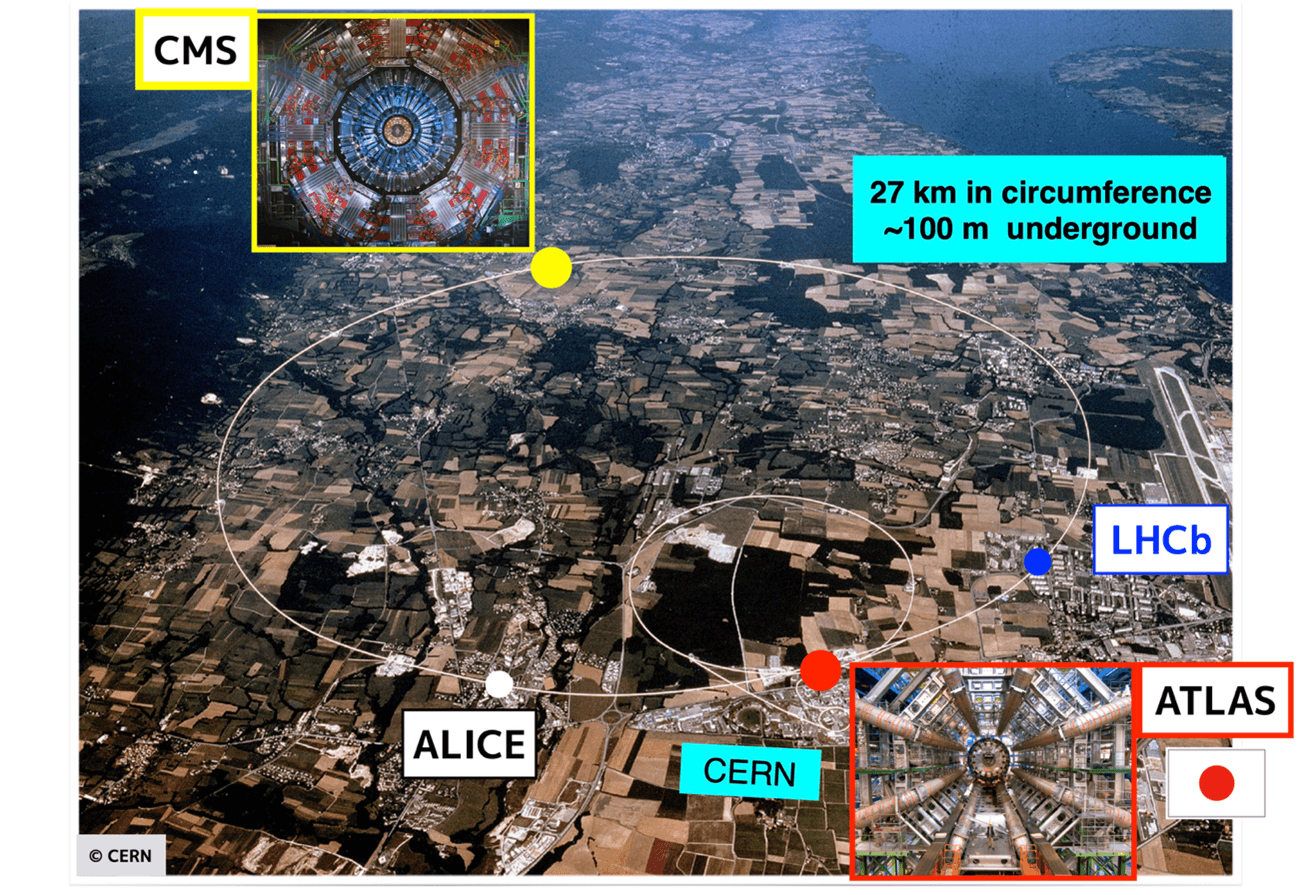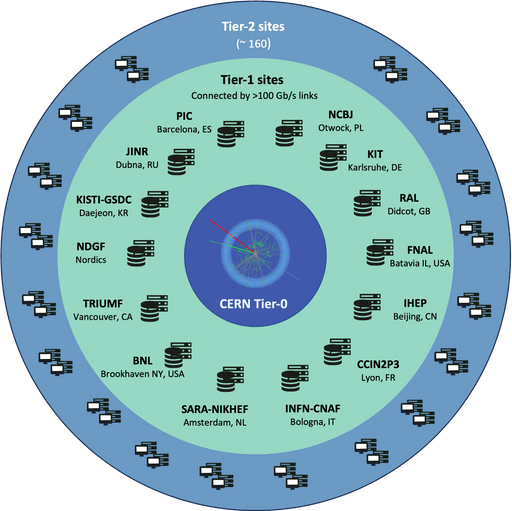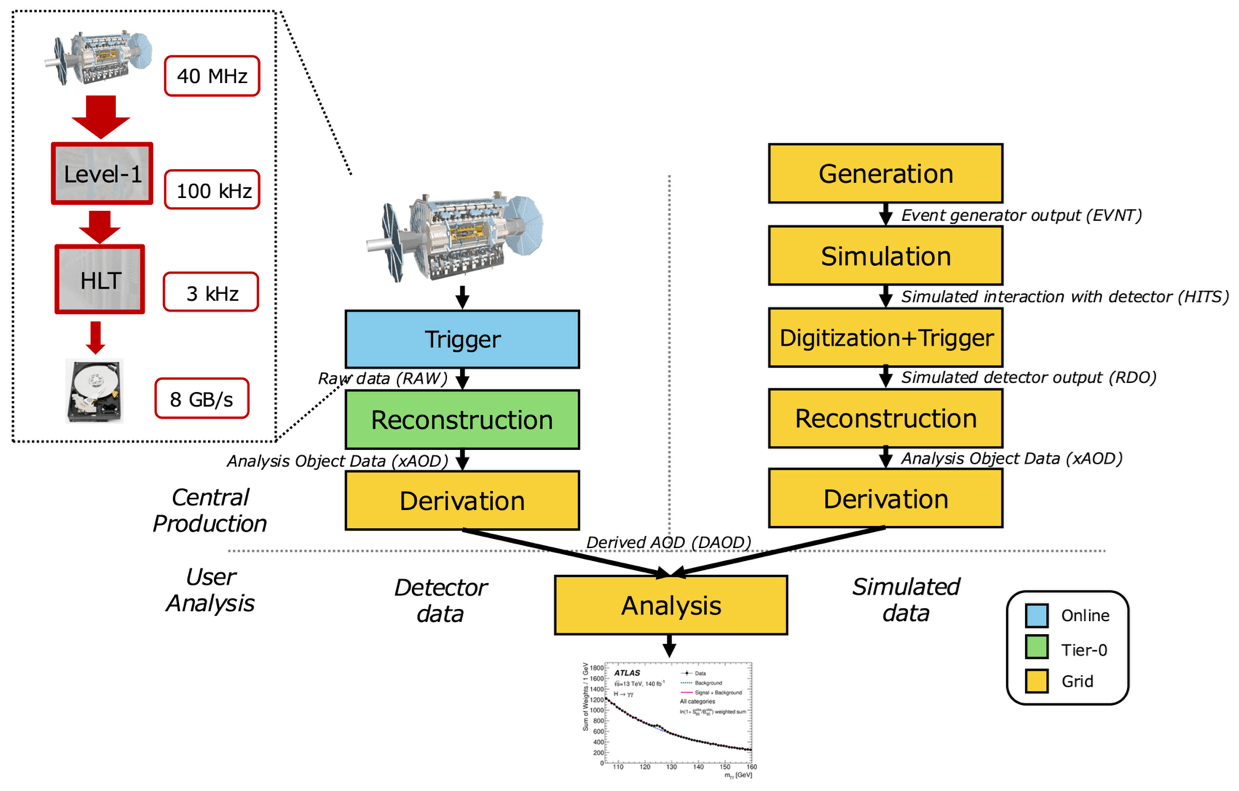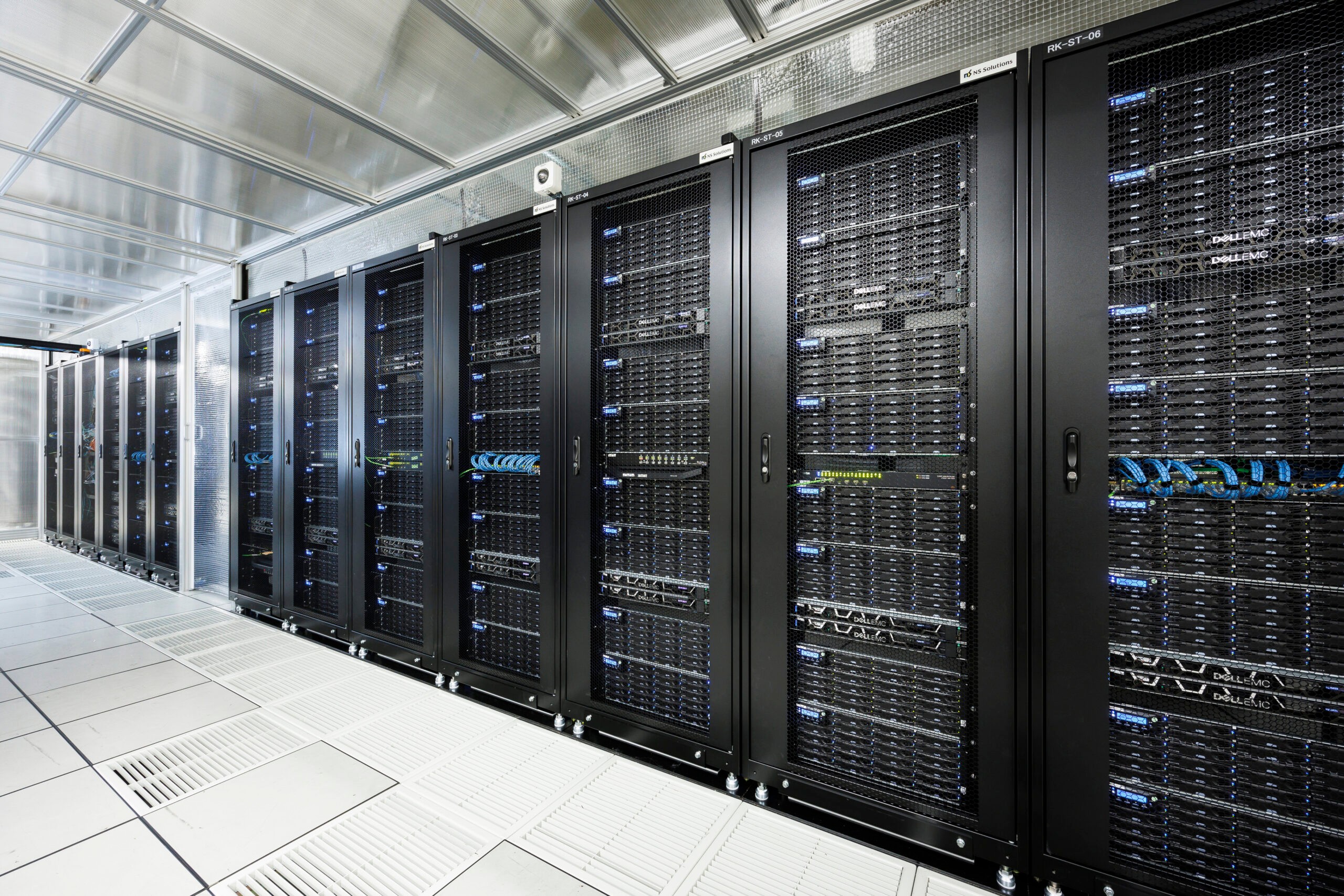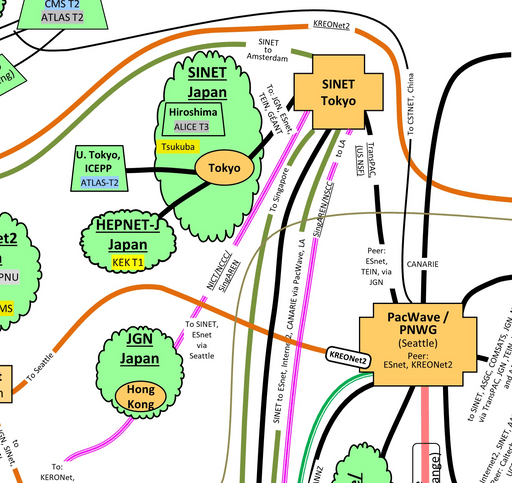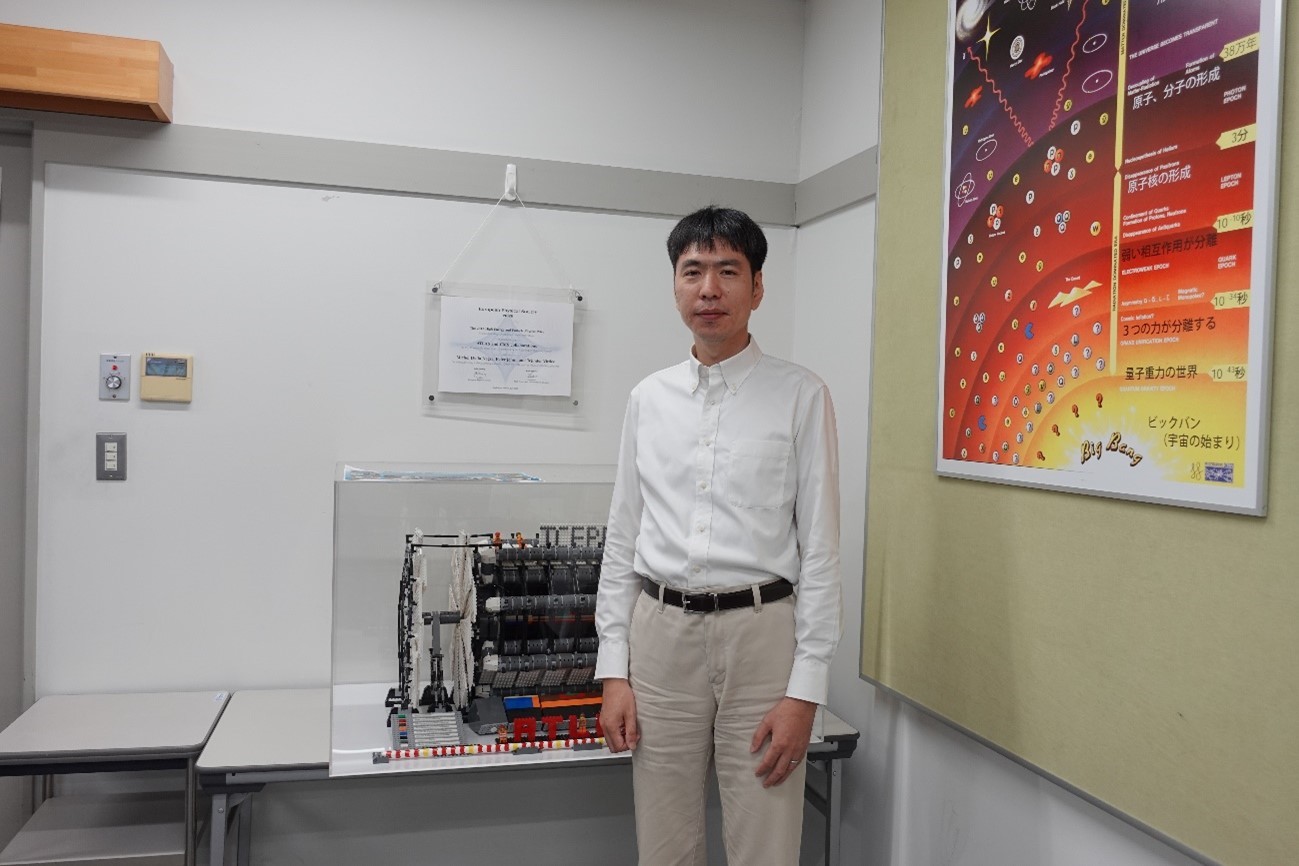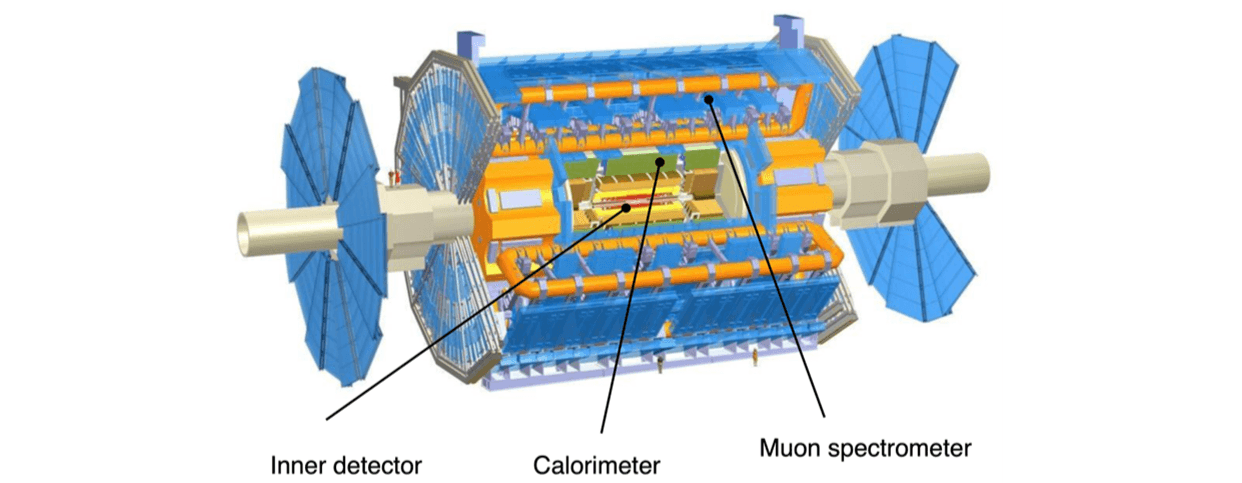
Members of the Center for Information Initiative and the Medical Educational Support Center
The International Center for Elementary Particle Physics (ICEPP) at the University of Tokyo is a center for experimental research in particle physics. Associate Professor Ryu Sawada of ICEPP is conducting research in search for supersymmetric particles, dark matter candidates, and self-coupling of the Higgs boson in the ATLAS experiment using the Large Hadron Collider (LHC), while also operating the computer system that processes data for the ATLAS experiment. We interviewed Associate Professor Sawada to get an overview of the ATLAS experiment and the role that SINET played. (Interview date: June 28, 2024)
Could you provide us with an overview of the International Center for Elementary Particle Physics at the University of Tokyo?
Sawada: The center was founded in 1974 by Professor Masatoshi Koshiba with the establishment of the high energy physics experimental facility for the purpose of researching elementary particles. If you break down the matter all around us into its smallest units, you end up with quarks, leptons, and other elementary particles. There are also four fundamental forces that govern these elementary particles: gravity, electromagnetism, the weak force, and the strong force. There is a formula that describes the basic interactions among the elementary particles, so they move according to this formula. All kinds of phenomena, ranging from the universe as a whole to our immediate surroundings, ultimately follow the principles of elementary particles and the theory of gravity. As elementary particle researchers, our ultimate goal is to elucidate the early universe and its future evolution.
Taking a more familiar perspective, an apple falling to the ground and the motions of a planet are of completely different magnitudes, but Newton discovered that both can be explained by universal gravitation, thus unifying the mechanics on the earth and the mechanics above the sky. Another example is that Maxwell unified the two forces of electricity and magnetism into the electromagnetic force. It is theoretically believed that such unification can happen in other cases too if you reach high enough energy, so Dr. Weinberg and others came up with a theory that unifies the electromagnetic force and the weak force from among the four forces I mentioned earlier. Moreover, in this unified theory, three groups, including Dr. Higgs, proposed a mechanism to confer masses to elementary particles as a result of interacting with a new field (Higgs field), and predicted the existence of a new particle (the Higgs boson). One of the objectives of the ATLAS experiment, which we are part of, has been to discover the Higgs boson. In fact, the Higgs boson was discovered, which became evidence of the unity of these two forces. This motivated me to strive to discover supersymmetric particles and other new particles and to verify theories that unify the strong force too in the future.
Could you tell us more about the ATLAS experiment?
Sawada: The ATLAS experiment is an experimental device at the Large Hadron Collider (LHC) at CERN (European Organization for Nuclear Research), on the border between Switzerland and France. There is a tunnel with a 27 km circumference 100 m underground, with a ring-shaped accelerator that allows proton beams to collide at four points. The LHC can conduct collision experiments at 13.6 TeV, the highest energy in the world, which allow us to search for heavier particles than other accelerators can.
One of those detectors is the ATLAS detector. With a diameter of 25 m and a length of 46 m, it is a general-purpose detector equipped with sensors for 100 million channels that can be used for a variety of physics research. Collisions occur at a frequency of 40 million per second, with about 1,000 collisions per second being extracted, recorded, verified, and analyzed.
In 1995, Japan was the first non-CERN member country to announce its cooperation with the LHC program. Japan is also involved in the manufacturing of LHC accelerators and ATLAS detectors. Of the 3,000 scientists from about 40 countries in the ATLAS experiment group, about 150 researchers in Japanese institutes have joined and are contributing with operation, data analysis, and computing.
Please tell us about the progress of the ATLAS experiment
Sawada: One of the results of the ATLAS experiment was the discovery of the Higgs boson (2012), as I mentioned earlier. The Higgs field gives masses to elementary particles. If elementary particles do not have masses, they will continue to fly at the speed of light and no matter will form, so the Higgs field is essential to the makeup of this world. The Higgs boson is formed at the LHC with a probability of about one per second, but because it is unstable, it decays in various forms into electrons, photons, and other particles. In rare cases, it decays into two Higgs bosons. To elucidate the properties of the “vacuum,” it is necessary to investigate in detail the property of “the Higgs boson acting on the Higgs boson itself” (Higgs self-coupling). This type of decay is difficult to search for due to its low probability, which can require a large amount of data, so this phenomenon has not yet been discovered.
We are also searching for dark matter candidates. Only 5% of the energy density of the universe comes from matter as we know it, while 27% comes from so-called dark matter. There are various particle candidates that may prove to be dark matter depending on the mass, but one of the most likely is called WIMPs, and one of them is the lightest supersymmetric particle. It is believed that supersymmetry theory has the potential to solve not only the problem of dark matter but also various issues in the Standard Model of elementary particles at the same time. If a supersymmetric particle is dark matter, its mass is thought to be between a few hundred GeV and a few TeV, and we might be able to discover them at the LHC.
Please tell us about the data collection and operation of the
Sawada: Right, we collect data at the experimental facility CERN. In addition to generating data on the order of 100 PB per year, the LHC experiments require computational resources (CPUs) according to the amount of data, increasing with the length of experimental periods and higher beam intensity. Since the computing power of CERN’s Tier 0 sites alone is insufficient, computer systems in various parts of the world are jointly managed by connecting them via a high-speed network under the WLCG (World LHC Computer Grid) framework. This makes it possible to process large amounts of data in numerous independent processes.
About 10 Tier-1 sites and dozens of Tier-2 sites also perform data processing, simulation generation, and physics analyses. Tier-1 sites are also responsible for basic processing and long-term storage of raw data as well as for coordinating site groups. On top of that, Tier-3 allows individual researchers to perform their own analyses.
Please tell us about the computer system and network environment in Japan as well.
Sawada: As for the computing of the ATLAS Japan group, we have ICEPP’s regional analysis center computer system for (1) Tier 2: WLCG grid site functions and (2) Tier 3: ATLAS Japan group members. It has approximately 15,000 CPU cores and 22 PB of disk storage, shared by universities and research institutes throughout Japan participating in the ATLAS experiment group by connecting to SINET6 at 100 Gbps. Moreover, we operate LHCONE, an international network for LHC, in collaboration with SINET and KEK, the High Energy Accelerator Research Organization. Since April 2024, international connections began to be switched via North America to connect to Europe via a 400 Gbps network.
I suppose this means that the network environment linked to SINET becomes important.
Sawada: Various improvements have been made to process data at higher speeds. For example, we use machine learning to speed up simulations. Moreover, the high-energy experiment group can use available resources overseas, such as supercomputers at research laboratories. You can increase the computing power by modifying the analysis program to make good use of the supercomputer GPU. Along with these increases in computing power, it is only when the network speeds up and the storage capacity increases that the overall data processing capacity increases. In the future, CERN will require an outgoing network of 5-10 Tbps, while large Tier-2 networks such as ICEPP’s regional analysis center are expected to have a bandwidth of 400 Gbps.
Moreover, we are considering use of not only computer grids but also other services such as HPC, cloud resources, and cold storage.
Please tell us about your outlook for the future.
Sawada: One of the major themes of the current Run 3 and the high-luminosity LHC is the search for new particles, including supersymmetric particles and dark matter candidates. There are two possible reasons why they haven’t been found so far. One is that the amount of data is small, meaning that the probability of the phenomena occurring is exceedingly small, which is why they have yet to be found. If so, they may be discovered if you collect a large amount of data. The other is that our search methods are wrong. We have many analysis teams that are searching by using different approaches, but they might not be optimal, so we need to think and find new ways to make searches.
Another theme is Higgs boson research. The particle has already been found, but we would like to increase the amount of data to improve the accuracy of the frequency measurements for each of the various decays. Moreover, we expect that we will be able to see the signs of self-coupling of the Higgs boson in the high-luminosity LHC experiments, so I hope we can continue our research toward that goal.

